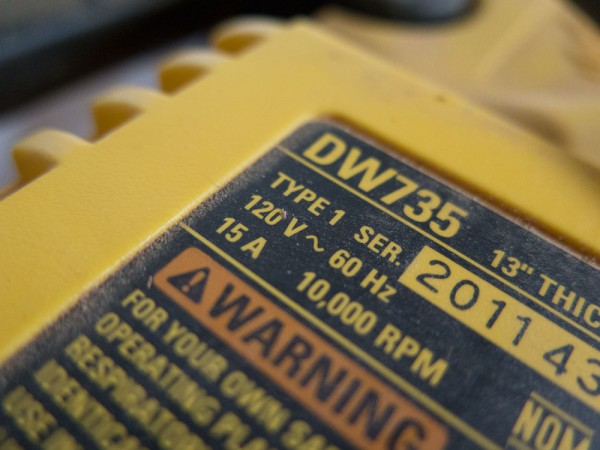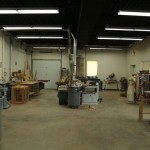We may receive a commission when you use our affiliate links. However, this does not impact our recommendations.
If you haven’t figured it out, I’m wary of tool reviews in magazines or online. With rare exception they are uninformed or (worse) misguided. And believe me: I am the first to admit that I was uninformed and misguided when I started writing and editing these reviews in the 1990s.
In my experience, Milquetoast reviews are not the result of malice. They are the result of several things.
- Readers want content. They don’t want to pay for it, but they want it served up quickly. On the other side of the equation, manufacturers need exposure, and they are willing to give away a few tools to get it. Do the math.
- Most tool reviewers have a limited frame of reference – they haven’t seen every portable planer or scratch awl made in the last 10 years. So their opinion is based on shaky ground.
- Most readers are impressed by the number of features that a tool has. That right there is a 100-percent true statement. Customers make lists of features in their head or on paper. Many times the tool with the most features wins. See also: bubble level, wrist strap, laser. In the customer’s head, having more features equals “versatility.”
What can you do? Stop and think for a minute about what are the three most important features of the kind of tool you need to buy. If you can’t answer this question, ask someone who has been woodworking longer than you.
Once you focus on those three things, evaluating tools becomes easier. To make things even easier than that, here is my personal list of features or selling points that are almost never critical when I buy a tool.
- Amperage/developed horsepower
- Motor RPM
- Number of clutch setting on a drill
- The particular steel/carbide formulation used in the cutter
- A rabbeting ledge on a jointer
- Depth stops on an electric planer
- Depth stops on a chop saw
- A laser on almost anything
- A box for chisels
- A plastic case or tool bag for anything
- Rosewood handles
- A bubble level on anything except a dedicated level
- A tool that does five things (drill, sander, rotary tool, banjo) – a multi-anything, really
- Big sets of cordless tools or chisels
- An included plane sock
- A bonus (and usually useless) tool stand
- A bonus cordless screwdriver/flashlight
Once you hold a chisel that feels good in your hand, once you use a handplane that is easily adjusted, once you use an electric planer that is dead-on accurate across its bed, then you can pick a tool or machine that suits you and fulfills the basic required functions.
Because there isn’t just one table saw, dovetail saw or drill press that is the creme de la creme – there are lots (once you recycle the silly tool case, put some decent bits in the tool and pitch the wrist strap).
— Christopher Schwarz
Here are some supplies and tools we find essential in our everyday work around the shop. We may receive a commission from sales referred by our links; however, we have carefully selected these products for their usefulness and quality.











To your list/comment, “Milquetoast reviews are not the result of malice. They are the result of several things…” it seems critical to point out that market forces — making money — are central to the topic. Intrinsic to your commentary is how well any given tool actually performs its designated task, and for most tools in the consumer sector, novel tools and approaches have long since been exhausted, so manufacturers are left with only the goo-ga’s to grab people’s attention. Tool manufacturers are now locked in a never-ending cycle of paint-job churn-and-burn, or “tool fashion;” there’s no new substance, just different clothing.
Enter Lie-Nielsen, Veritas, and a handful of other manufacturers who have turned to redoing the tried and true, basic tool classics. There are some power tool manufacturers who try to keep alive the great American stationary tools of the pre-War and post-War eras, which are means heavy and basic. This vein seems to be missing from your comments, but in fairness they are exemplars of exactly what you’re talking about. The challenge is that pursuit of this channel is subject to global economic factors which directly impact tool cost — if one wants the “good stuff,” s/he had better open up their wallets because those features cost … a lot.
— Bradley
For me, an interesting and usually relevant criteria in evaluating a tool is it’s durability in the marketplace (how long has it been around, substantially unchanged from its current form) and feedback from other users. Reviewers usually hate this, because a tool that has been around for 20 years as been reviewed to death. Manufacturers know this, and constantly tweak their product with new “features” to get attention in reviews. Three items come to mind: porter cable hasn’t changed their 3 horse fixed base router since the 80’s. My elu 3 horse plunge router lives on in dewalt yellow, identical down to the switch. And the dewalt biscuit joiner looks the same as when it was introduced 15 or so years ago. Proven designs that continue to sell because they just do their job well. There are many other examples in the marketplace, but they rarely get more than a passing comment in reviews.
The three words “almost never critical” before your list are critical to the validity of the first item on your list being there. You almost never have to worry about the current requirements (amperage) of your power tools because someone else has done that for you. However, if you ignore or fail to understand the meaning of the three little symbols “15A” at the bottom of that planer label, and how it fits in to the electrical wiring of your house, garage, or shop, you may regret it.
On point.
Before I got into woodworking I was heavy into audio. It was kill me every time someone would ooh and aah over the latest flashing light put on an insert [amplifier, tuner, ect…].
For me that was usually a warning indicator but too many fall for it and are “drawn to the light.”
Quality and well designed anything doesn’t need bells nor whistles to be good.